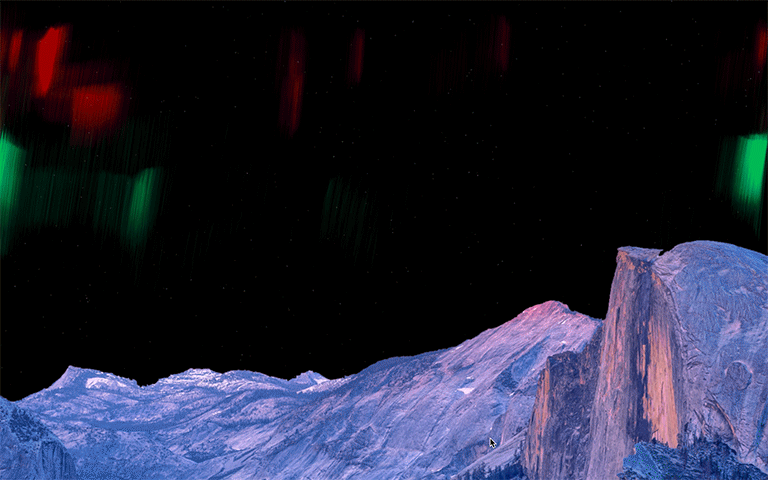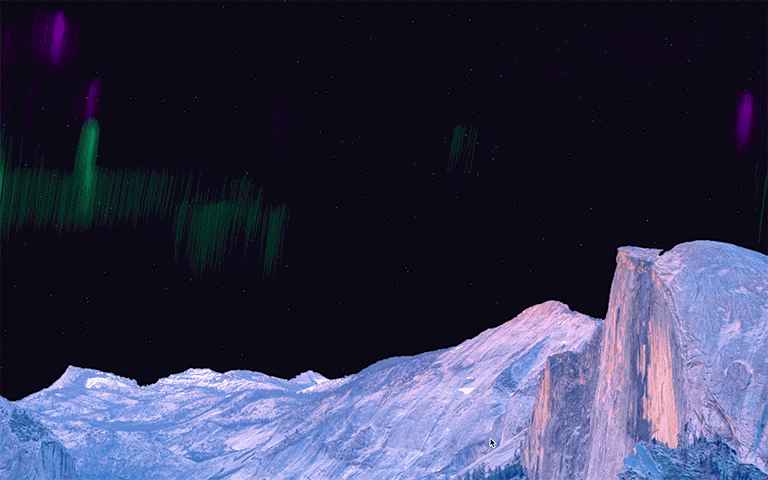Polar Nights


The interactive Aurora Borealis animation called Polar Night imitates the natural movements of the Northern Lights dancing across the polar firmament. The lights illuminate the night sky in shades of green, blue, violet, and red and appear as iridescent rippling streamers fading into nothingness.
Aurorae are caused by particles colliding with the Earth’s atmosphere, which can be detected with the naked eye as colourful rays entering from outer space.
The animation intends to imitate these beams, which in great density blend into not glowing carpet. A sky fading from twilight blue to midnight black sprinkled with flickering stars forms the backdrop of the light spectacle. The intensity of the aurora is connected to the amplitude of ‘Adagio in D Minor’ by John Murphy.
Users can interact with the animation by choosing which colours are displayed and then save moments they like by taking a screenshot.
The animation is created with processing, using object-oriented programming, based on a template created by Daniel Shiffman, which essentially makes use of Perlin Noise and a flow field, whose force acts upon the particles constituting the Aurorae.
